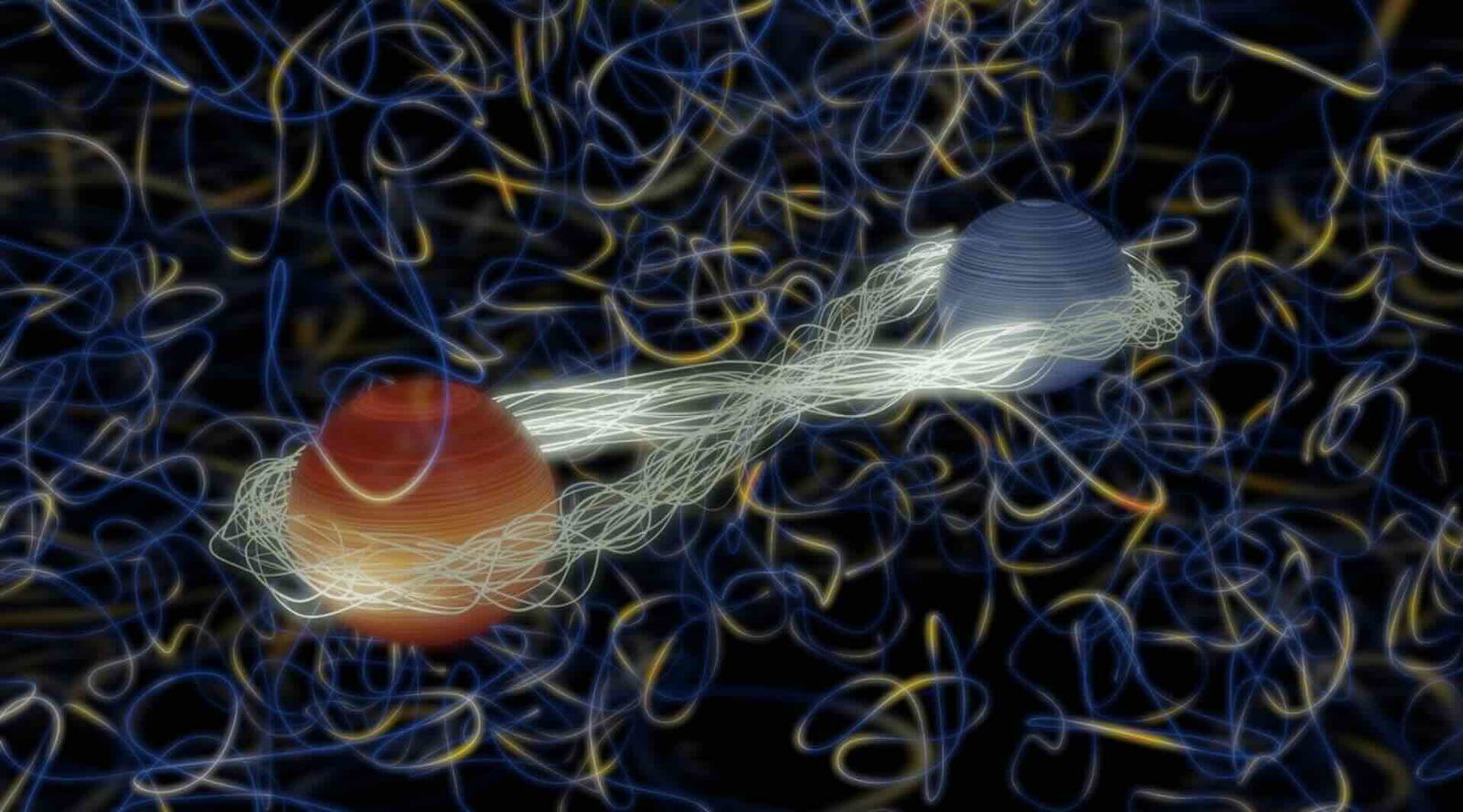A novel microscopic imaging technique, developed by Brown University engineers to capture 3D images using quantum entanglement, may finally solve the problem of phase wrapping.
Undergraduate students Moe (Yameng) Zhang and Wenyu Liu presented their work at the recent Conference on Lasers and Electro-Optics. They worked on an independent project under the supervision of senior research associate Petr Moroshkin and Professor Jimmy Xu.
Illuminating the Target
The new concept utilizes two light spectra: infrared light to illuminate the target, which is then imaged using visible light entangled with the infrared. This process advances microscopic imaging by capturing the intensity and phase of light, producing true holographic images.
“We introduce Quantum Multi-Wavelength Holography,” said Zhang, a junior concentrating in engineering physics at Brown. “The technique allows us to gather better and more accurate information on the thickness of the object, which enables us to create accurate 3D images using indirect photons.”
“You could call this infrared imaging without an infrared camera,” Xu said. “It sounds impossible, but they did it. And they did it in a way that enables great depth resolution in the images it produces.”
How the Microscopic Imaging Works
X-rays and photographs, two standard imaging techniques, capture light reflected off an object, yet quantum imaging relies on the “spooky action at a distance” of quantum entanglement. The “at a distance” portion refers to how, once two photons become entangled, anything that happens to one affects the other, even when separated. Quantum imaging relies on this, referring to one photon as the “idler” and the other as the “signal.” Essentially, the idler’s job is to scan the target, and detecting the entangled idler allows researchers to produce an image of the target.
The Brown engineers used a nonlinear crystal to generate idlers from photons with infrared wavelengths entangled with visible wavelength signal photons. The team said the best combination was infrared illumination and visible light rendering.
“Infrared wavelengths are preferred for biological imaging because they can penetrate skin and are safe for delicate structures, but they require expensive infrared detectors for imaging,” said Liu, a Brown senior concentrating in engineering physics and applied math. “The advantage of our approach is that we can use infrared for probing an object, but the light we use for detection is in the visible range. So we can use standard, inexpensive silicon detectors.”
Overcoming Phase Wrapping
To make 3D quantum images, the researchers had to solve for the long-standing problem of “phase wrapping.” This issue arises when imaging techniques utilize the phase of light waves to determine the depth of a target’s contours. The peaks and valleys of the phase sometimes are not as deep as the contours they are imaging, creating a wrap-around effect where deeper features appear at the same depth as shallower features if they are in the same part of the wave cycle.
The Brown team’s answer involved using two sets of entangled photons instead of one at different wavelengths of light. This allowed for a much greater depth measurement, leading to a more accurate image.
“By using two slightly different wavelengths, we effectively create a much longer synthetic wavelength — about 25 times longer than the originals,” Liu said. “That gives us a much larger measurable range that’s more applicable to cells and other biological materials.”
As an homage to their school, the pair imaged a 1.5 millimeter letter “B,” crafted from metal. Their successful test proved that quantum entanglement can generate high-fidelity 3D images. Liu received the School of Engineering’s Ionata award for this project and his senior thesis, which is presented for unusual creativity and imagination in an independent study project.
“We had been reading papers by pioneers in this field, so it was great to be able to attend the conference and meet some of them in person,” Zhang said.
“It’s really an amazing opportunity.”
Ryan Whalen covers science and technology for The Debrief. He holds an MA in History and a Master of Library and Information Science with a certificate in Data Science. He can be contacted at ryan@thedebrief.org, and follow him on Twitter @mdntwvlf.

